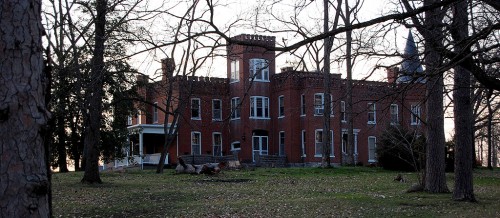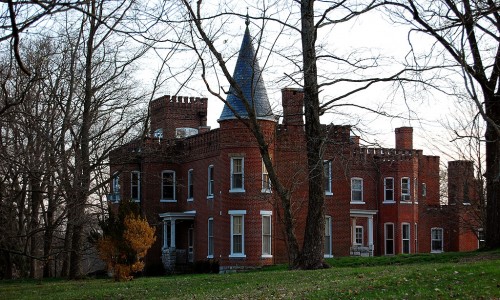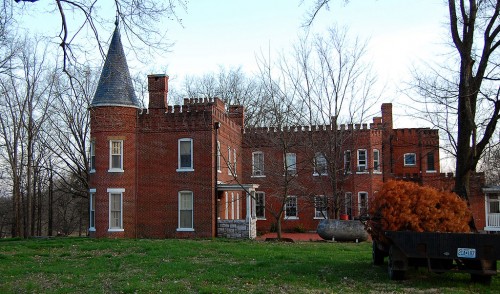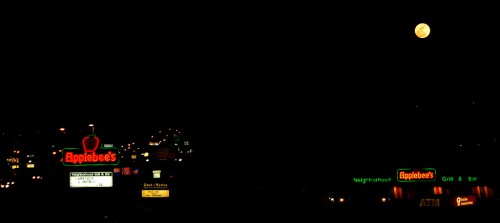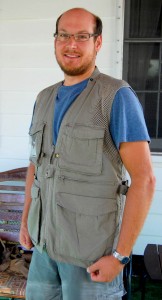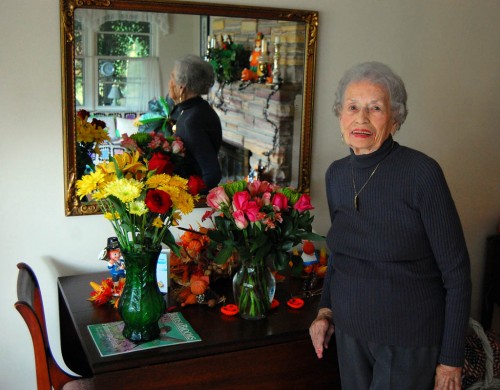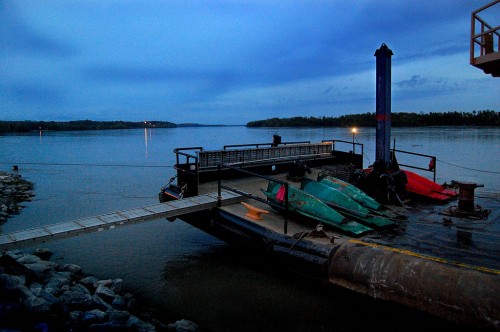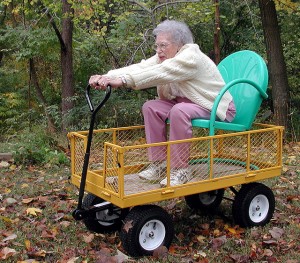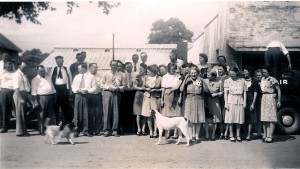My friend, Jan Norris, the former food editor of The Palm Beach Post and a fellow blogger, asked me to look up a local artist, Brad Elfrink, who produces beautiful hand-crafted buttons and jewelry. Jan’s a button collector, who writes for other collectors.
Brad’s a a relatively young guy originally from Marble Hill who has developed a love for Cape Girardeau’s buildings and people. I was describing a couple of landmarks I had been searching for over the weekend. “Want to see some pieces of them?” he asked, showing me some remnants he had saved from the bulldozer.
I’ll be writing about Brad and his finds later.
When I got back into the car, I called Jan and said, “Most places have six degrees of separation. Cape reduces it to two.”
It was still early, so I decided to shoot some other buildings I remembered in and around the 1600 block of Independence.
Old Fire Station Number Two
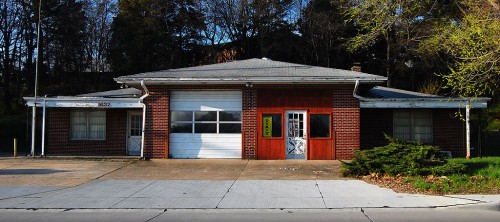 We used to go there on grade school field trips. It looks like it might have had two bays in the old days.
We used to go there on grade school field trips. It looks like it might have had two bays in the old days.
Pak-a-Snak, an early convenience store
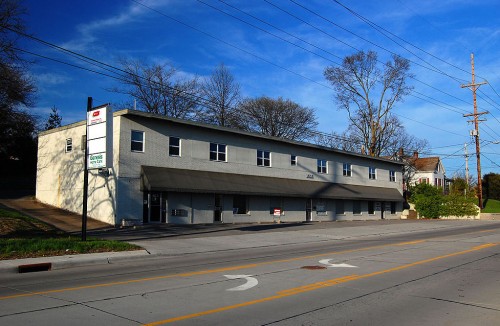 Just east of the fire station, on the same side of the street, was the Pak-a-Snak. A Missourian story Aug. 17, 1955, called it the first drive-in, cash and carry market of its kind in Cape. We’d call it a convenience store today.
Just east of the fire station, on the same side of the street, was the Pak-a-Snak. A Missourian story Aug. 17, 1955, called it the first drive-in, cash and carry market of its kind in Cape. We’d call it a convenience store today.
Mr. and Mrs. Charles Farrow were the first owners. They sold it to Mr. and Mrs. Porter Stubbs in 1955. The store hours – shocking – were 8 a.m. until 8:30 p.m. every day including – double shocking – Sundays and holidays.
A trip to the Twilight Zone
 I wanted a photo of the old Donut Drive-in, but I wasn’t exactly sure which shop it was in. I heard music coming from a small bar a couple of doors down, so I figured somebody there might be able to help me out.
I wanted a photo of the old Donut Drive-in, but I wasn’t exactly sure which shop it was in. I heard music coming from a small bar a couple of doors down, so I figured somebody there might be able to help me out.
I don’t spend a whole lot of time in bars. I HAVE had occasion to step into one from time to time when I’m riding my bicycle. It doesn’t matter if it’s a redneck bar, a biker bar or just a coffee shop full of regulars, as soon as you step through the door wearing bike shorts and a glow-in-the-dark jersey, conversation stops and all eyes focus on you.
How to survive wearing Lycra
At that point, I’ve found your odds of survival go up if you glance around the room, pause a couple of beats and then say in a loud voice, “Y’all sure do dress funny around here.” Before long, people are asking how far you’ve come, how far are you going, what have you seen along the way, and are offering to buy you drinks or a meal.
There was a man holding a beer in the doorway. “Come on in. There’s plenty of room,” he said with a smile.
“You’ve got enough gray hair that you can probably help me,” I said, handing him a business card.
“Are you Kenny Steinhoff?”
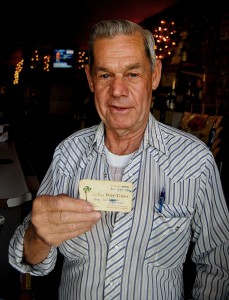 I’ve been running from that nickname since 1967, but I had to admit that – in Cape – I was “Kenny Steinhoff.”
I’ve been running from that nickname since 1967, but I had to admit that – in Cape – I was “Kenny Steinhoff.”
“I’m Jerry Schweain,” he said, extending his hand and smiling wider.
Turns out he was a truck-driving friend and former neighbor of my brother-in-law, John Perry. He posed with a friendly woman from behind the bar, then said, “I’ve got something to show you that you probably never thought you’d see again.”
He reached for his wallet, fumbled around for a bit, then pulled out a worn and faded Palm Beach Post-Times business card with my home phone number scrawled on it. “You told me to give you a call if I ever got down to your neck of the woods. I never got closer than around Tampa, so I never called you.”
I gave him that card in 1977 or 1978.
Only in Cape Girardeau would someone hold onto your business card for 30-plus years and then run into you in a neighborhood bar 1,100 miles from where you live.
Donut Drive-in
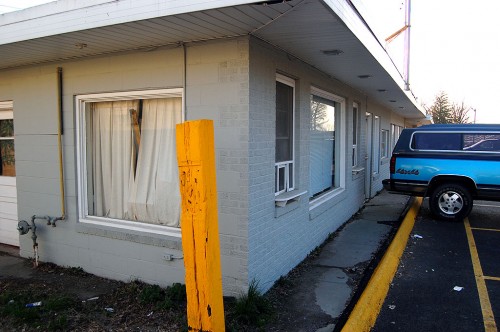 With Jerry’s help, I was able to locate the Donut Drive-in. The building still had the serving windows. It was a big deal to pull up to the window on Sunday morning on the way home from church to pick up some fresh donuts or Long Johns, jelly-filled donut pastries so sweet they’d find a cavity faster than a dentist.
With Jerry’s help, I was able to locate the Donut Drive-in. The building still had the serving windows. It was a big deal to pull up to the window on Sunday morning on the way home from church to pick up some fresh donuts or Long Johns, jelly-filled donut pastries so sweet they’d find a cavity faster than a dentist.
Earl Kirchoff opened the doughnut stand in 1952. The ad in the 1964 Girardot had the slogan “Tote a Poke Home.”

